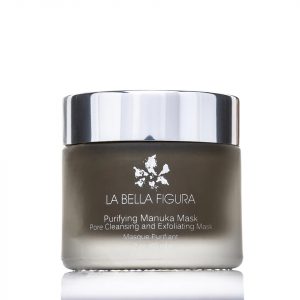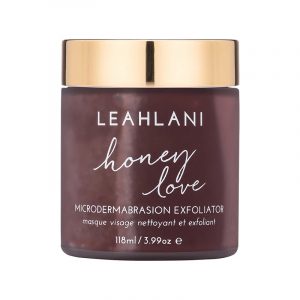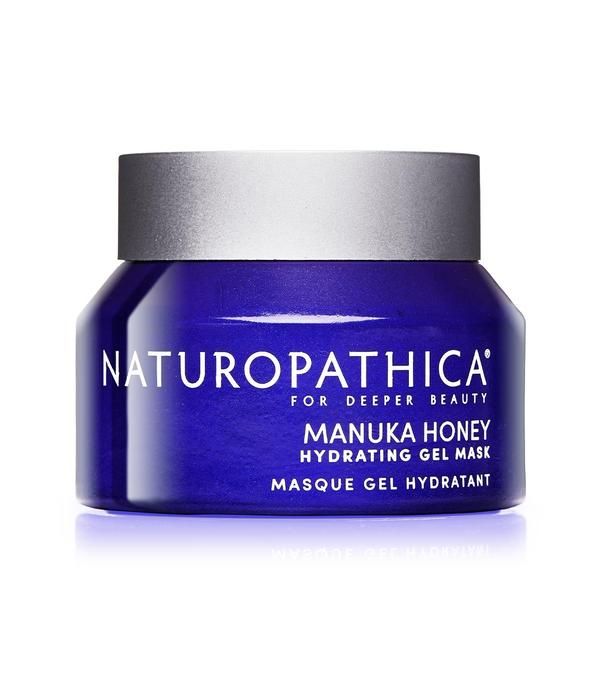When you have a shelf full of fancy skin treatments but nothing is giving you the results you need, it’s time to get back to basics. And raw honey may be your salvation.
Raw honey promotes skin healing and regeneration while protecting from bacterial damage. It also calms inflammation and makes skin look more plump and smooth—similar to a moisturizing sheet mask.
There are many different ones to choose from, but the top honey for skincare use is Wedderspoon, a New Zealand producer of raw, non-GMO honey.
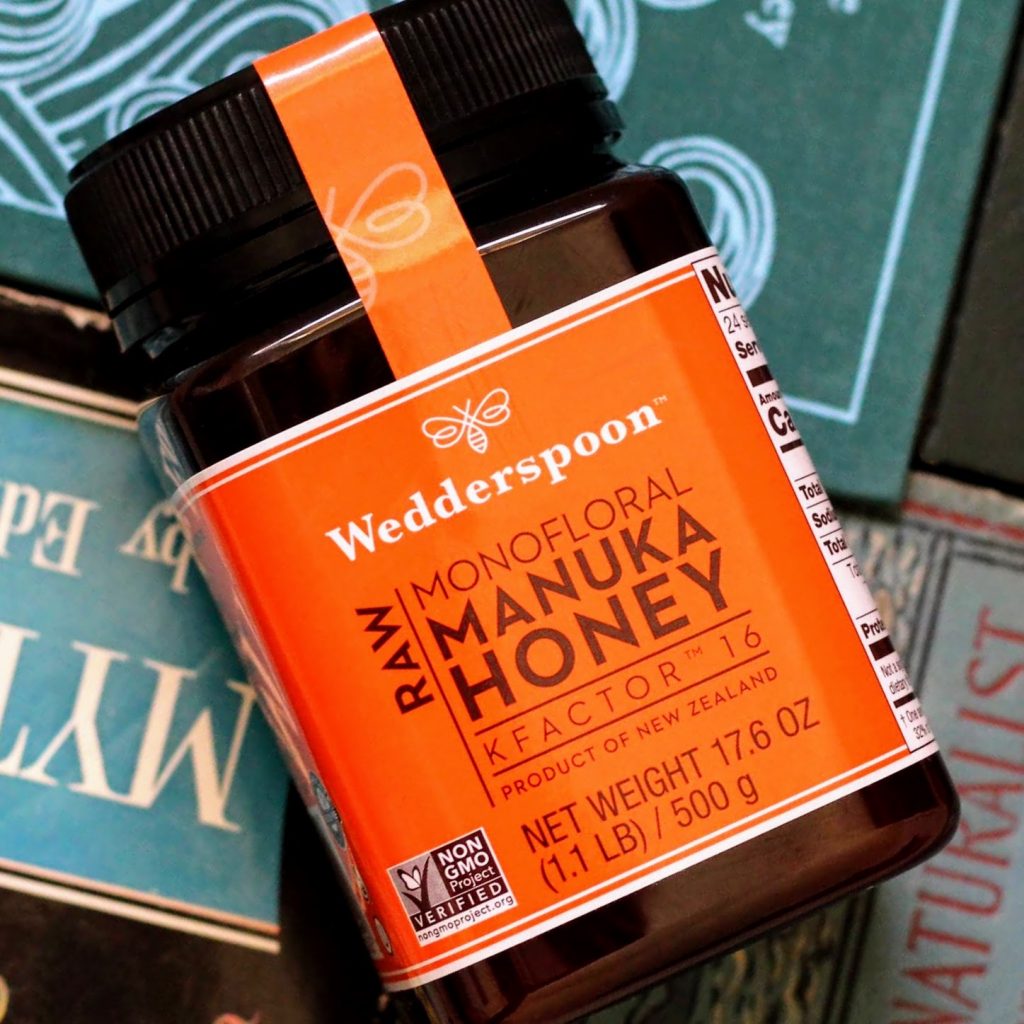
Who can use raw honey?
Raw honey has something to offer for just about everyone. Here are a few of the different skin types and conditions which can benefit from raw honey:
- sensitive skin
- inflamed skin, AKA “angry” skin
- acne-prone skin
- skin recovering from acne scarring and post-inflammatory hyperpigmentation
- prematurely aged skin
- dry skin
- oily skin
- mature skin
- eczema and rosacea-prone skin
Reactions or allergies to honey are unlikely, but possible. Organic raw honey is normally soothing to the skin, so if you become irritated by using it, that may be a sign of a (uncommon) allergy.
But thankfully, raw honey is more often one of the few products that won’t create reactions in highly reactive skin.
How to use raw honey for skin
There is a wide range of beauty applications for raw honey. Here are a few of my favorites:
- As a facial cleanser - Raw honey is a gentle, restorative cleanser that benefits most skin types and conditions. Massage honey in circular motions on damp skin, letting it sit for 2-5 minutes before rinsing with tepid water. Skin will feel soft and restored. It must be mentioned that honey does not remove makeup, so either remove makeup prior to honey cleansing, or cleanse with honey in the morning.
- As a facial mask - This is one of the most remarkable uses of raw honey, whether your complaint is fine lines, dullness, acne or dryness. Spread a layer over clean, dry skin and let it sit for 15-30 minutes. Rinse. Redness will be reduced and skin will be smoothed and plumped. For inflamed or “angry” skin, this is my most frequently recommended mask. Raw honey works especially well as a morning mask, to prep and smooth the face for the day ahead. Experiment using mix-ins with your honey mask—my favorites are an opened-up probiotic capsule and this antioxidant booster.
- For hair - Raw honey can be used as a hair mask or shampoo for soft, healthy hair. Because it’s so sticky, try mixing 1/4 cup of honey with just enough water to make it sufficiently thin for an easy application. Leave on for 20 minutes before rinsing. Or add a spoonful of honey into your regular shampoo and wash as usual. If your hair is especially coarse or damaged, consider mixing raw honey with olive oil as a pre-shampoo treatment.
- As a lip mask - Apply a thick layer of raw honey over the lips. Then place a piece of plastic wrap on top of the lips. In 15 minutes, rinse clean. This is a useful technique to prep lips before lipstick, or to repair cracked, dry lips.
- As a gentle exfoliant - In the midst of a breakout or inflammatory crisis, your go-to exfoliants may become noticeably irritating. Massaging raw honey onto damp skin will provide just enough exfoliation without making skin more red or irritated. Honey contains small amounts of gluconic acid and other alpha-hydroxy acids, which gently remove dead skin cells and brighten the complexion. I’ve seen DIY recipes for honey exfoliants that add baking soda. Personally, I do not exfoliate with baking soda as it reacts with water to create an extremely alkaline solution—which can disrupt the skin’s natural barrier, damaging skin and negatively affecting the skin’s microbiome.
The raw difference
It can be tempting to get cheap pasteurized honey. Because honey is honey, right?
Not exactly.
For maximum healing benefits, the bottle must indicate “raw” or “un-pasteurized”. This type of minimally-processed, living honey has the power to transform skin.
Most honey found at the supermarket has been heat-processed and doesn’t provide the same nutritional benefits as raw honey. Pasteurization renders its natural enzymes and probiotics inactive.
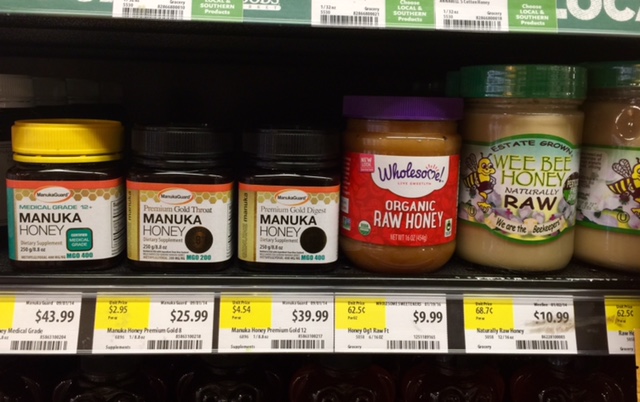
You may ask, If raw honey is so superior to pasteurized honey, why would anyone pasteurize it?
Pasteurizing honey doesn’t have the safety benefits of pasteurizing, for instance, milk. We all know that unpasteurized milk runs the risk of contamination by bacteria and other harmful organisms. But unadulterated, raw honey has a low moisture content and high acidity, making it safe from this type of contamination. Honey is commercially pasteurized because it allows the honey to sit on the supermarket shelf longer. Indefinitely, actually. Meanwhile, raw honeys have a shelf life ranging from 1-4 years…which is still an extremely long time. The processing that supermarket honey undergoes also creates a clearer, more liquid appearance that some companies believe consumers prefer.
I prefer the superior nutritional benefits of raw honey over the indefinite shelf life of processed honey.
A study at Lund University was able to identify 13 beneficial bacteria in fresh, raw honey, and showed that it was effective at against a variety of pathogens. As Dr. Tobias Olofsson succinctly explained, “Since store-bought honey doesn’t contain the living lactic acid bacteria, many of its unique properties have been lost in recent times.”
When it comes to bacteria and skin, you don’t just want to eradicate problematic bacteria, but replenish and support the beneficial bacteria. And raw honey does just that.
If your skin has been made worse by powerful topical medications, raw honey may be helpful in restoring balance. It gives skin a fighting chance.
Choose manuka honey for acne-prone skin
If you’re struggling with acne, opt for raw Manuka honey, like the Wedderspoon one pictured above. It costs more, but Manuka honey has an excellent reputation as an acne healer.
Manuka honey contains a significantly higher concentration of methylglyoxal than non-Manuka honey. In a lab environment, methylglyoxal has been shown to be effective against a variety of bacteria and viruses, including h. pylori, MRSA and e. coli. The goal isn’t to have bacteria-free skin, but bacteria-balanced skin. And raw honey provides this advantage.
Also, when honey gets wet, it forms small amounts of natural hydrogen peroxide, which abates acne-causing bacteria and repairs damaged skin.
Where to get raw honey
Wedderspoon’s raw Manuka honey will run about $25+ per bottle.
Amazing natural skin products with honey as a key ingredient
Honey is a popular ingredient many natural skin care products. If you’re really a fan of honey for skin, check out these awesome products:
- Purifying Manuka Honey Mask ($70) from La Bella Figura
- Honey Love Microdermabrasion Exfoliator ($54) from Leahlani Skincare
- Manuka Honey Gel Hydrating Mask ($58) from Naturopathica
- Cleopatra Restorative Milk + Honey Beauty Mask ($88) from Lilfox
The Verdict
Raw honey heals damaged skin, calms inflammation and acne, moisturizes dry skin, balances oily skin, smooths fine lines and can even be used on the hair. It’s an all-around brilliant natural beauty product.
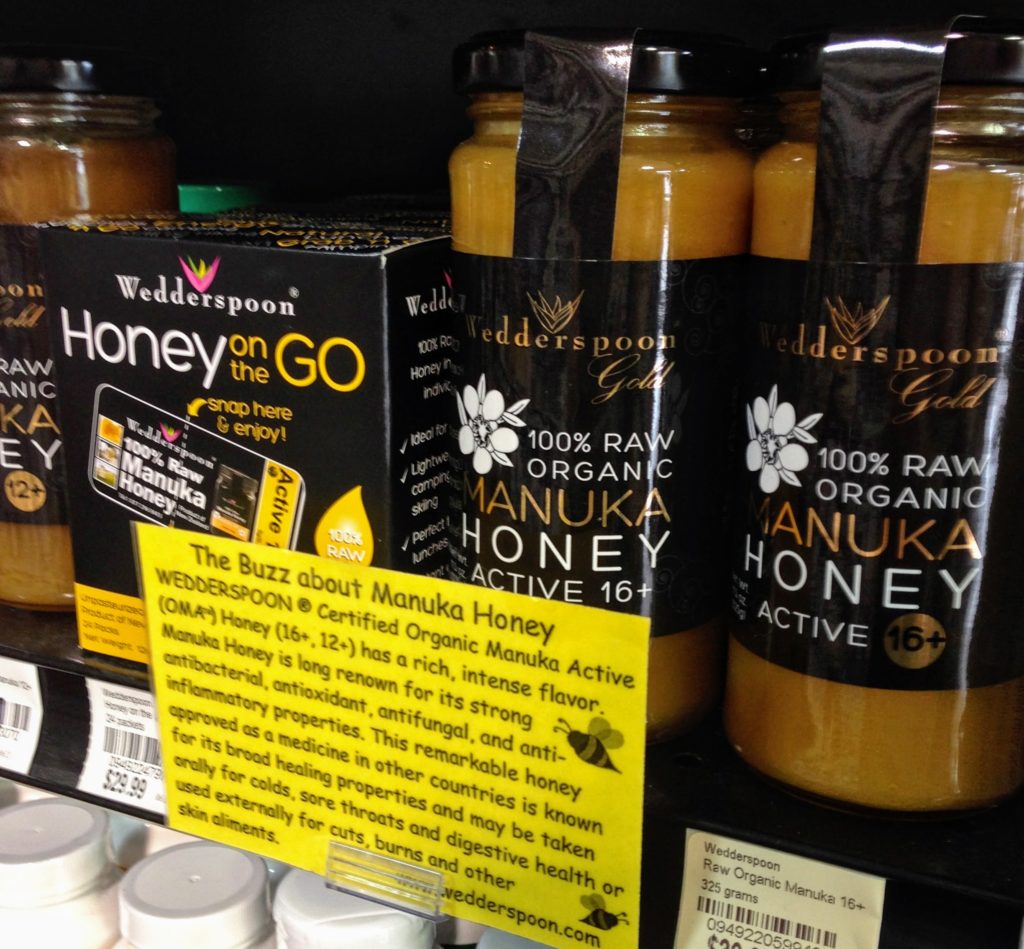
Highly Recommended
Raw honey is part of my popular guide to natural skin care, 97 Remarkable Natural Skincare Products.
*This post is not sponsored. All opinions are my own.
